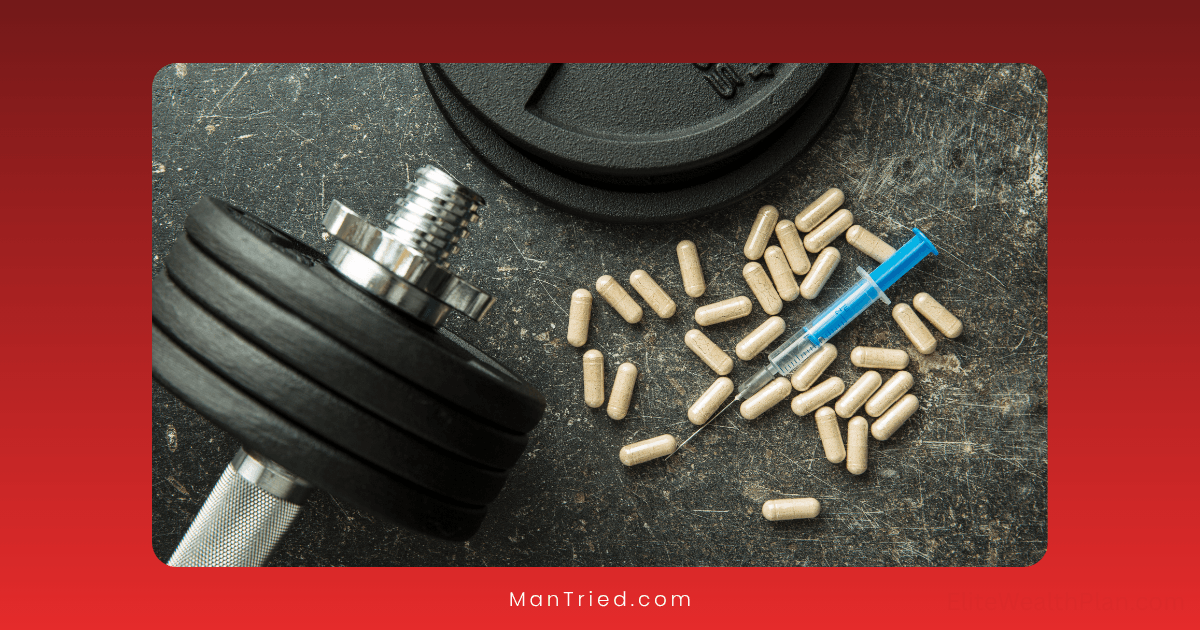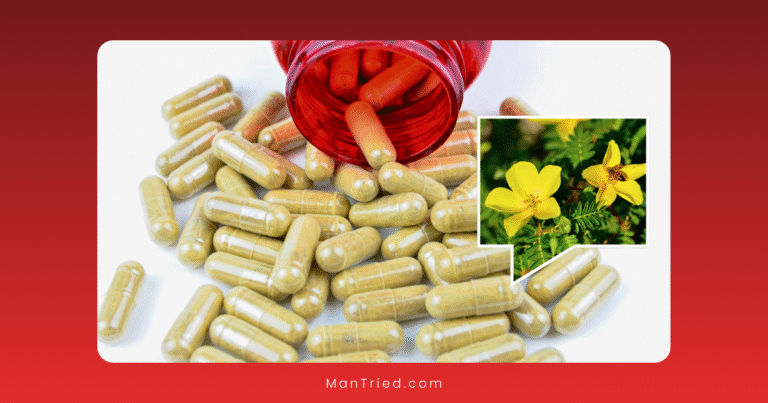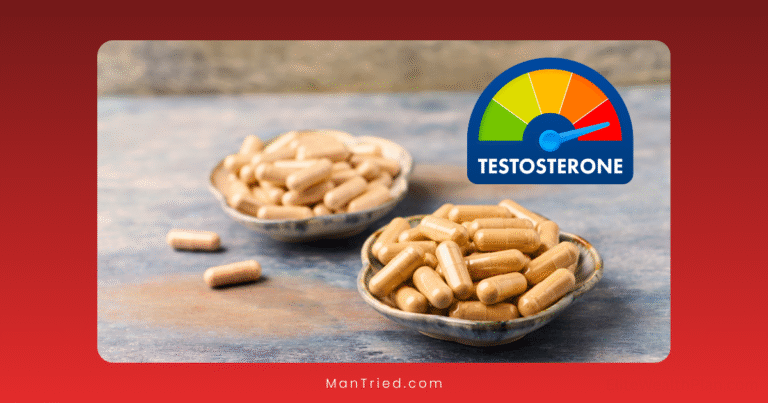Testosterone Boosters and Exercise: Timing for Maximum Benefit

In the quest for optimal physical performance, muscle growth, and overall vitality, the relationship between testosterone and exercise has become a focal point for many fitness enthusiasts. Testosterone, the primary male sex hormone, plays a crucial role in muscle protein synthesis, recovery, energy levels, and body composition. With the growing popularity of natural testosterone boosters, a critical question emerges: How should you time these supplements with your workouts to maximize their benefits?
This comprehensive guide examines the science behind testosterone boosters and exercise timing, providing evidence-based strategies to optimize your hormonal response and training results.
Understanding Exercise-Induced Testosterone Response
Before diving into supplement timing, it’s essential to understand how exercise naturally affects testosterone levels.
The Acute Testosterone Response to Exercise
Research consistently shows that exercise—particularly resistance training—can trigger a significant acute increase in testosterone levels. According to a 2023 study published in PMC, several factors influence this hormonal response:
- Exercise Type: Resistance training typically elicits a more pronounced testosterone response compared to endurance training.
- Training Intensity: Higher intensity workouts (70-85% of one-repetition maximum) produce greater testosterone increases.
- Volume and Rest Periods: Higher volume with shorter rest periods (60-90 seconds) maximizes the hormonal response.
- Exercise Selection: Compound movements involving large muscle groups (squats, deadlifts, bench press) produce the greatest testosterone spike.
- Individual Factors: Age, fitness level, body composition, and baseline hormonal status all affect the magnitude of response.
The testosterone elevation from resistance exercise typically peaks immediately post-workout and can remain elevated for 15-60 minutes before returning to baseline levels. This “anabolic window” represents a key opportunity for maximizing the benefits of both exercise and supplementation.
Long-Term Effects of Exercise on Testosterone
Beyond the acute response, consistent resistance training offers long-term benefits for testosterone levels. According to Dr. Mirkin’s 2025 research, men who regularly strength trained over 2 years maintained testosterone levels, while sedentary controls experienced typical annual declines of 1-2%.
This suggests that regular resistance training not only provides acute hormonal benefits but may also slow age-related testosterone decline—a compelling reason to incorporate strength training into your long-term fitness strategy.
Popular Testosterone Boosters: Mechanisms and Efficacy
Before discussing timing strategies, let’s examine some of the most evidence-backed natural testosterone boosters and their mechanisms of action:
1. Ashwagandha (KSM-66)
Mechanism: Ashwagandha primarily works by reducing cortisol (stress hormone) levels, which indirectly supports testosterone production. It may also directly influence the hypothalamic-pituitary-gonadal axis.
Evidence: According to a clinical study highlighted by GlobeNewswire in 2025, men taking 300 mg of KSM-66 ashwagandha twice daily showed a 96 ng/dL average increase in testosterone compared to an 18 ng/dL increase in the placebo group when combined with resistance training.
Typical Dosage: 300-600 mg daily, often split into morning and evening doses.
2. Fenugreek
Mechanism: Fenugreek contains compounds that may inhibit the enzyme aromatase, which converts testosterone to estrogen, potentially preserving testosterone levels.
Evidence: According to Nutrifitt, fenugreek supplementation has been shown to boost free testosterone levels by up to 46% in some studies. An eight-week supplementation period also resulted in significant improvements in leg press and bench press performance.
Typical Dosage: 500-600 mg daily.
3. D-Aspartic Acid (DAA)
Mechanism: DAA stimulates the release of luteinizing hormone (LH) from the pituitary gland, which signals the testes to produce more testosterone.
Evidence: Research cited by Nutrifitt suggests that D-Aspartic Acid can raise testosterone levels by up to 42% in just 12 days, though results vary significantly between individuals.
Typical Dosage: 2-3 grams daily.
4. Zinc, Magnesium, and Vitamin B6 (ZMA)
Mechanism: This mineral combination supports testosterone production, with zinc being a crucial component in testosterone synthesis and magnesium supporting sleep quality and recovery.
Evidence: While research on ZMA specifically is mixed, zinc deficiency is strongly associated with low testosterone levels, and correcting this deficiency can normalize hormonal status.
Typical Dosage: Typically 30mg zinc, 450mg magnesium, and 10-11mg vitamin B6.
Optimal Timing Strategies for Testosterone Boosters
Now that we understand both the exercise-induced testosterone response and the mechanisms of popular testosterone boosters, let’s explore evidence-based timing strategies to maximize their benefits.
Strategy 1: Morning and Evening Split Dosing
According to Whey Okay and Cellucor, one of the most effective approaches is split dosing—taking part of your supplement in the morning and part in the evening.
Morning Dose Benefits:
- Aligns with naturally higher morning testosterone levels
- Provides energy and focus for daytime or morning workouts
- Supports metabolic function throughout the day
Evening Dose Benefits:
- Supports recovery processes that occur during sleep
- Helps maintain more stable 24-hour testosterone levels
- May improve sleep quality, which is crucial for testosterone production
This approach is particularly effective for supplements containing ashwagandha, which has been shown to reduce cortisol levels and may improve sleep quality when taken in the evening.
Strategy 2: Pre-Workout Timing
For those who train in the afternoon or evening, taking certain testosterone boosters before your workout may enhance the exercise-induced testosterone response.
Recommended Approach:
- Take fast-acting ingredients like D-Aspartic Acid 30-60 minutes before training
- Consider combining with pre-workout ingredients that don’t interfere with testosterone production
- Focus on ingredients that may enhance workout performance (ashwagandha for stress reduction, fenugreek for energy)
According to Performance Lab, combining testosterone boosters with pre-workout supplements is generally safe if both contain clean, natural ingredients without excessive stimulants.
Strategy 3: Post-Workout Optimization
The post-workout period represents a critical window for recovery and adaptation, making it another potential opportunity for testosterone booster timing.
Recommended Approach:
- Take testosterone-supporting nutrients within 2 hours post-workout
- Combine with protein and carbohydrates to enhance overall recovery
- Focus on ingredients that support sleep and recovery if training in the evening
Dr. Mirkin’s 2025 research highlights that post-workout protein intake within 2 hours of training significantly influences the testosterone response to exercise, suggesting that this window may be ideal for certain testosterone-supporting supplements as well.
Strategy 4: Cyclical Timing Based on Training Schedule
For those with varied training schedules, a more nuanced approach may be beneficial.
Recommended Approach:
- On training days: Take performance-focused boosters pre-workout
- On rest days: Focus on recovery-enhancing ingredients
- Adjust timing based on training time (morning vs. evening)
This personalized approach acknowledges that different ingredients may provide different benefits depending on your daily activities and training status.
Ingredient-Specific Timing Recommendations
Different testosterone-boosting ingredients may benefit from specific timing strategies:
Ashwagandha (KSM-66)
Optimal Timing: Split dosing with 300mg in the morning and 300mg in the evening.
Research Support: According to the 2025 GlobeNewswire report, Testosil (which contains KSM-66 ashwagandha) is recommended to be taken as two capsules daily, one in the morning and one in the evening.
Exercise Considerations: Taking ashwagandha before high-intensity workouts may help reduce exercise-induced cortisol elevation, potentially preserving testosterone levels during and after training.
Fenugreek
Optimal Timing: With meals, typically breakfast and dinner.
Research Support: Studies showing fenugreek’s effectiveness typically used divided doses with meals to maximize absorption and minimize potential digestive discomfort.
Exercise Considerations: Taking fenugreek with a pre-workout meal may help maintain higher testosterone levels during training by inhibiting aromatase activity.
D-Aspartic Acid
Optimal Timing: Morning, preferably with breakfast.
Research Support: Most clinical studies administered D-Aspartic Acid in the morning, which aligns with the body’s natural testosterone production rhythm.
Exercise Considerations: For morning training sessions, taking D-Aspartic Acid upon waking (30-60 minutes pre-workout) may enhance the exercise-induced testosterone response.
ZMA (Zinc, Magnesium, B6)
Optimal Timing: 30-60 minutes before bed on an empty stomach.
Research Support: According to Cellucor, ZMA is most effective when taken before sleep, as it may enhance sleep quality and support overnight recovery processes.
Exercise Considerations: ZMA should be taken regardless of training schedule, but may be particularly beneficial on training days to support recovery.
Maximizing Results: Workout Timing for Testosterone Optimization
Beyond supplement timing, the timing of your workouts themselves can significantly impact testosterone response.
Morning Workouts
According to Limitless Male, morning workouts align with naturally higher testosterone levels, potentially amplifying the hormonal response to exercise.
Benefits:
- Testosterone is naturally highest in the morning
- May enhance strength and performance
- Better fat-burning potential
- Improved energy and mental clarity throughout the day
Supplement Strategy for Morning Workouts:
- Take fast-acting testosterone boosters upon waking (30-60 minutes pre-workout)
- Consider pre-workout nutrition that supports testosterone (protein, healthy fats)
- Save sleep-enhancing ingredients (magnesium, ashwagandha) for evening doses
Afternoon/Evening Workouts
While morning workouts align with peak testosterone levels, late afternoon workouts (4-6 PM) offer their own hormonal advantages.
Benefits:
- Body temperature peaks in late afternoon, improving muscle function
- Potential for greater strength and power output
- Enhanced flexibility and reduced injury risk
- Provides a second, smaller testosterone boost
Supplement Strategy for Afternoon/Evening Workouts:
- Take performance-enhancing testosterone boosters 30-60 minutes pre-workout
- Consider split dosing with recovery-focused ingredients saved for bedtime
- Ensure workouts end at least 2-3 hours before bedtime to avoid sleep disruption
Workout Structure for Maximum Testosterone Response
According to Dr. Mirkin’s 2025 research, specific resistance training protocols can optimize testosterone response:
- Focus on compound movements: Squats, deadlifts, bench presses, and rows
- Use moderate to heavy loads: 70-85% of one-repetition maximum
- Optimal rep range: 6-8 repetitions per set for maximum hormonal response
- Training frequency: 3-4 sessions per week with adequate recovery
- Volume considerations: 4-6 sets per major muscle group
This approach led to 15-20% increases in total testosterone levels over 12 weeks in men over 40, highlighting the importance of proper training structure alongside supplement timing.
Potential Synergies and Interactions
When combining testosterone boosters with exercise, certain synergistic effects may emerge:
Positive Synergies
- Ashwagandha + High-Intensity Training: Ashwagandha’s cortisol-reducing effects may be particularly beneficial during high-intensity training, which can temporarily elevate cortisol levels.
- Fenugreek + Post-Workout Nutrition: Fenugreek may enhance insulin sensitivity, potentially improving nutrient partitioning when taken with post-workout meals.
- ZMA + Sleep Quality: Improved sleep from ZMA supplementation may enhance exercise recovery and natural testosterone production.
Considerations and Cautions
- Stimulant Interactions: Some pre-workout ingredients (caffeine, yohimbine) may increase cortisol, potentially counteracting some testosterone-boosting effects.
- Overtraining Risk: Even with testosterone support, excessive training volume can suppress hormonal production. According to PMC, balance is crucial.
- Individual Variability: Genetic factors, age, baseline hormonal status, and training experience all influence how you respond to both exercise and supplements.
Practical Implementation: Creating Your Timing Strategy
Based on the research, here’s a practical framework for timing testosterone boosters with exercise:
For Morning Training (5 AM – 10 AM)
Pre-Workout (30-60 minutes before):
- D-Aspartic Acid (if using)
- Half dose of Ashwagandha
- Pre-workout nutrition (protein, healthy fats)
Post-Workout:
- Protein and carbohydrates within 30 minutes
- Fenugreek (if using) with post-workout meal
Evening:
- Second half dose of Ashwagandha
- ZMA 30-60 minutes before bed
For Afternoon/Evening Training (4 PM – 8 PM)
Morning:
- D-Aspartic Acid with breakfast
- Half dose of Ashwagandha
Pre-Workout (30-60 minutes before):
- Fenugreek (if using)
- Pre-workout nutrition
Evening:
- Second half dose of Ashwagandha
- ZMA 30-60 minutes before bed (at least 2 hours after workout)
For Rest Days
Morning:
- D-Aspartic Acid with breakfast
- Half dose of Ashwagandha
Evening:
- Fenugreek with dinner (if using)
- Second half dose of Ashwagandha
- ZMA 30-60 minutes before bed
Monitoring and Adjusting Your Approach
To truly optimize your testosterone booster timing, consider these monitoring strategies:
- Track key metrics: Energy levels, workout performance, recovery quality, sleep quality, and subjective well-being
- Consider periodic testing: Blood work every 3-6 months can provide objective feedback on hormonal status
- Adjust based on results: Be willing to modify your timing strategy based on your personal response
- Cycle appropriately: Most testosterone boosters work best when cycled (typically 8-12 weeks on, 4 weeks off)
Conclusion: Personalized Timing for Maximum Results
The optimal timing of testosterone boosters with exercise isn’t one-size-fits-all. While the research provides valuable guidelines, individual factors like age, training experience, baseline hormonal status, and specific goals all influence the ideal approach.
The most effective strategy combines evidence-based principles with personal experimentation:
- Understand the mechanisms: Know how your supplements work and how exercise affects hormonal response
- Align with natural rhythms: Work with your body’s natural testosterone patterns when possible
- Prioritize consistency: Regular supplementation and training are more important than perfect timing
- Monitor your response: Pay attention to how different timing strategies affect your results
- Optimize the fundamentals: Remember that sleep, nutrition, and training structure have greater impacts on testosterone than supplement timing alone
By thoughtfully timing your testosterone boosters in relation to your exercise routine, you can potentially enhance their effectiveness and maximize your training results. However, keep in mind that even the best timing strategy can’t compensate for poor training, inadequate nutrition, or insufficient recovery.
The science of testosterone optimization continues to evolve, with new research emerging regularly. The strategies outlined in this guide represent the current understanding as of 2025, but staying informed about new developments will help you continue to refine your approach.
Final Thoughts: The Bigger Picture
While optimizing testosterone booster timing can enhance your results, it’s important to maintain perspective on where this fits within your overall fitness and health strategy.
The hierarchy of importance for testosterone optimization is:
- Foundational lifestyle factors: Sleep quality, stress management, and body composition
- Training and nutrition: Proper resistance training protocols and nutrient-dense diet
- Supplement selection: Choosing evidence-based ingredients at effective dosages
- Timing optimization: Strategically aligning supplementation with exercise and daily rhythms
By focusing first on the fundamentals while thoughtfully implementing the timing strategies outlined in this guide, you can create an integrated approach that maximizes both natural testosterone production and the effectiveness of any supplements you choose to include in your regimen.
Remember that testosterone is just one factor in your overall health and performance. The ultimate goal should be creating a sustainable approach that supports not just optimal hormonal health, but overall wellness and quality of life.
Frequently Asked Questions
While taking all supplements at once is more convenient, research suggests that split dosing may provide more stable hormone support throughout the day. According to Whey Okay, splitting your dosage between morning and evening helps maintain more consistent hormonal support and may reduce the risk of side effects from larger single doses.
Yes, maintaining consistent supplementation on rest days is important. According to Cellucor, testosterone boosters are typically recommended for use over 8 consecutive weeks alongside a proper diet and resistance training. Rest days are when much of your recovery and muscle growth occurs, making hormonal support equally important.
While some testosterone boosters may provide modest benefits without exercise, their effects are significantly enhanced when combined with resistance training. According to Dr. Mirkin’s 2025 research, the combination of proper resistance training protocols and nutritional support produces the most significant improvements in testosterone levels.
Results timeline varies by ingredient and individual:
- D-Aspartic Acid: Some studies show effects in as little as 12 days
- Ashwagandha: Typically 4-8 weeks for significant effects
- Fenugreek: Generally 6-12 weeks for optimal results
- ZMA: Effects on sleep may be noticed within days, but hormonal benefits typically take 3-4 weeks
Women naturally have much lower testosterone levels than men, and their hormonal response to both supplements and exercise differs. According to a 2023 study published in MDPI, both high-intensity interval training and traditional resistance training actually decreased testosterone levels in women while improving overall hormonal balance. Women should consult healthcare providers before using testosterone-boosting supplements, as they may cause unwanted side effects.
Yes, resistance training with compound movements appears to create the strongest synergy with testosterone boosters. According to PMC, resistance training produces a more pronounced effect on testosterone levels compared to endurance training, particularly when using higher intensity loads with shorter rest periods.






